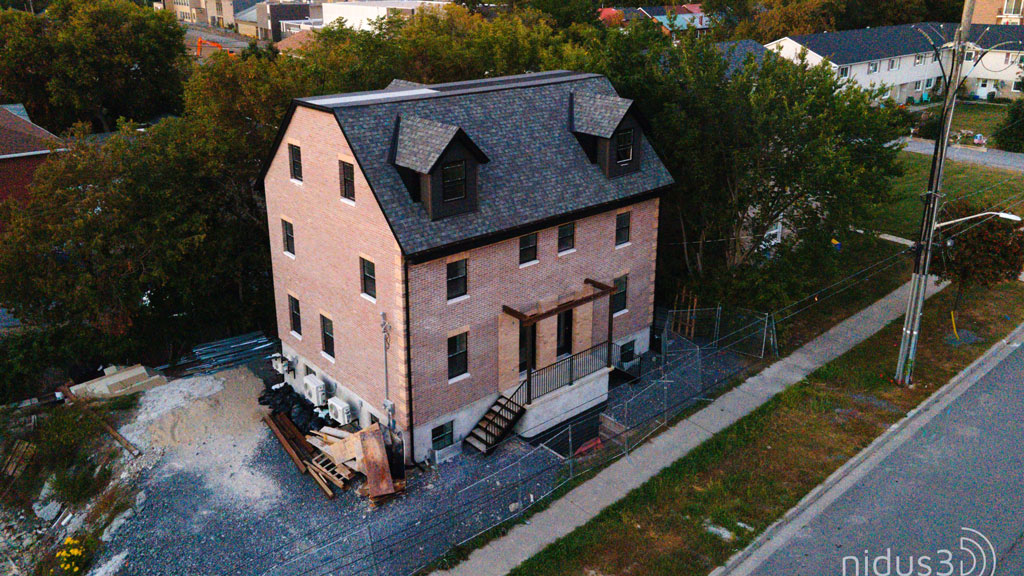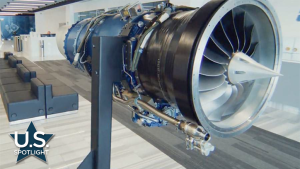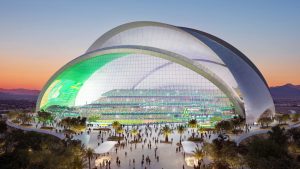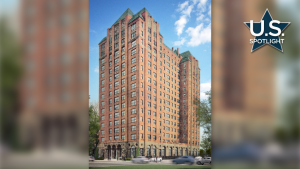Since its invention in 1939, 3D printing of concrete buildings (3DCP) has been largely restricted to the onsite production of small buildings. However, the recent development of much larger printers and the growth of off-site manufacturing has quickly increased wider 3DCP adoption.
Enthusiasm has always surrounded 3DCP for its potential to build faster and better with fewer workers, and at costs lower than traditional methods. A U.K. academic study analyzing 3DCP costs suggests savings in labour and materials alone using 3D printing could reduce building costs by up to 35 per cent.
The World Economic Forum also supports the 3DCP concept for its speed of construction and its size and shape adaptability in remote or difficult-to-access areas.
Lately, onsite 3DCP buildings are getting bigger and more creative.
Maryland-based PERI Formwork Systems built the first multi-storey 3D printed house in the United States near Houston in May 2023. It’s a four-storey, 30,000-square-foot custom home with several geometry changes and architectural features, including a 3D-printed kitchen island, fireplace and a 40-foot-tall chimney. The building’s double exterior walls increase insulation values and makes it water, wind and fire-resistant.
Texas-based ICON is notable as one of the largest 3DCP companies in the world and has been continually at the forefront of developments since it opened in 2017.
In March, the company unveiled a 75-foot-tall robotic 3D printing arm called Phoenix that recently produced an 8.3-metre-high structure using low-carbon mixtures. Its robotic technology can potentially cut previous printing costs in half, ICON says. Prices for designs in its catalogue of 60-plus ready-to-print homes start at $25 per square foot for walls and $80 per square foot for foundations and roofs.
ICON has also promised to introduce an AI-powered platform called Vitruvius next year that will produce custom designs, along with full permit-ready construction documents.
Canadian 3DCP builder, nidus3D, based in Kingston, Ont., has created what it claims to be North America’s first three-storey 3DCP building. The two-unit, 8,740-square-foot residential structure has an exterior brick veneer face and steel-framed roof. Printing, including basement, only took 80 hours.
The company also completed North America’s first residentially-permitted multi-unit 3DCP building in Leamington, Ont., in partnership with Habitat for Humanity Windsor-Essex and the University of Windsor.“The build includes four self- contained, 560-square-foot homes and was partially funded through Canada Mortgage and Housing Corporation’s Innovation Fund,” the company says.
However, onsite 3DCP has been constrained by the logistics of moving printing machinery to the building site, coupled with the availability of competent engineering and design expertise. This is where off-site 3DCP fabrication has come to the fore.
Instead of transporting massive 3D-printing machines, components are printed in a controlled environment for assembly onsite. The result is cost-effective modular housing units, or kits of parts, that offer high quality, reduced waste and even less-costly production due to the possibility of producing them in large quantities.
3DCP residential modular kits of parts are already being manufactured and are attracting significant new investment.
Mighty Buildings is a San Francisco-based start-up offering pre-built, factory-made 3DCP panels that can be customized to any plan and assembled onsite in a matter of a few days. Mighty uses composite material made of 60 per cent recycled glass that cures with ultra-violet light. This delivers five times concrete’s tensile and flexural strength along with R24 insulation, while weighing 30 per cent less. Steel framing supplied with the kit allows certified building up to four storeys.
The creation of 3DCP commercial buildings is also becoming possible.
German construction engineering company Züblin has constructed a 3DCP warehouse in Stuttgart, Germany from a single 3D printer with load-bearing concrete walls. They call it a “world first.”
The cementitious paste is delivered in a rectangular shape similar to a brick, as opposed to the rounded edges formed by current 3D concrete printers. From a truck-mounted concrete pump, a 26-metre robotic boom with a special pressure head applies concrete in layers based on a predefined digital construction plan. The squared walls are room-sealing, thereby preventing the spread of flames and smoke in the event of a fire, the company says.
And if there are bragging rights for 3DCP height, it goes to a 24-metre tower expected to be completed this year in the Swiss Alps village of Mulegns. Tor Alva will offer scenic views, along with a series of colonnade spaces for art installations and musical and theatrical performances.
Despite its promise, 3DCP technology is regarded as a disruptive technology. New entries to the industry may face regulatory and permitting challenges as they confront codes that aren’t up to date with the technology, and possible resistance from traditional elements within the construction industry.











Recent Comments